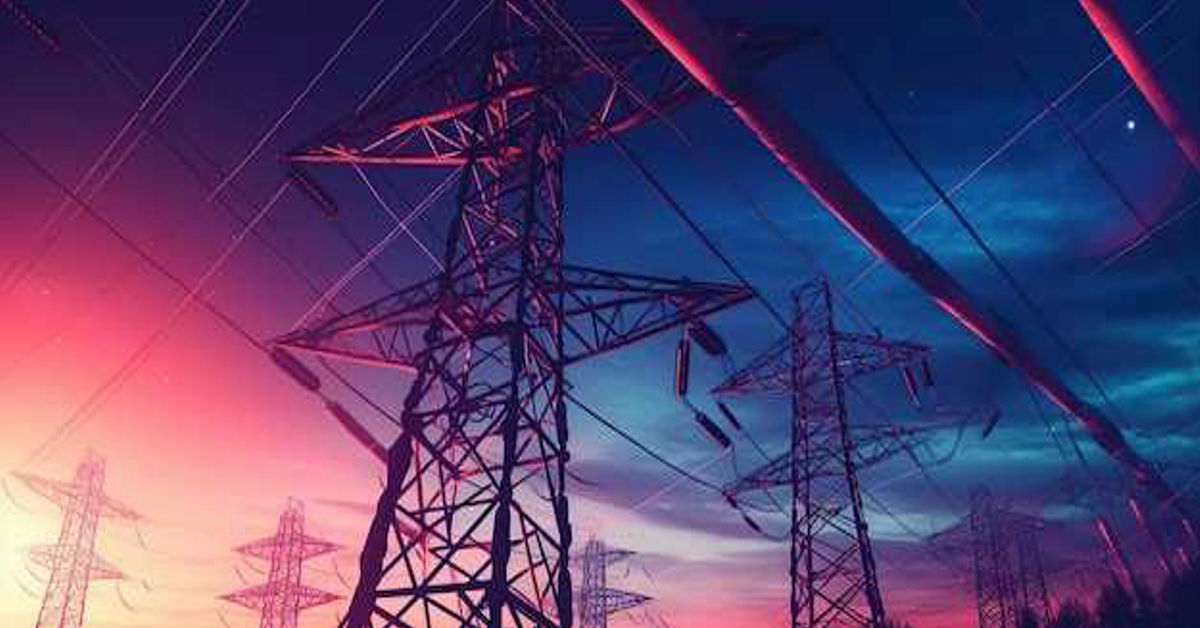Interstate 75 isn’t just a highway—it’s a lifeline that connects economies, communities and families across multiple states. When the I-75 power line shutdown in Ohio unfolded, it served as a stark reminder of how fragile our daily systems can be. In a matter of minutes, powerful winds toppled poles, live wires struck vehicles and traffic came to a standstill in both directions. Beyond the immediate danger to motorists, the outage left hundreds of homes and businesses without power, disrupting lives in ways both visible and unseen. What was once a routine drive quickly turned into a chaotic scene, underscoring how deeply transportation and energy infrastructure are intertwined.
Events like this push us to think beyond the accident itself and confront broader questions of preparedness. How do we build highways and power grids strong enough to withstand the force of nature? What investments are needed to ensure that communities are not left vulnerable when disaster strikes? The I-75 shutdown shines a light on the urgent need for resilience planning—whether through stronger utility infrastructure, faster emergency response systems, or better coordination between transportation and energy sectors. By learning from incidents like this, we can begin to design safer, smarter systems that not only respond to crises but also prevent them from spiraling into larger community-wide disruptions.
Understanding the I-75 Power Line Shutdown
The I-75 power line shutdown was triggered by severe weather conditions. High winds caused six power poles to collapse across the interstate, dragging down both transmission and distribution lines. Some of these lines landed directly on vehicles, while others created road hazards that forced immediate lane closures. The shutdown not only paralyzed highway traffic but also cut off electricity to nearly 700 households and even affected a local hotel. Such incidents demonstrate the interconnected nature of transportation and utility infrastructure, where the failure of one system can disrupt many others. This event also underlines the importance of coordinated responses between highway patrols, utility companies, and emergency services to ensure public safety and restore normal operations quickly.
The Impact on Traffic and Commuters
Highways like I-75 serve as lifelines for regional travel and commerce. The sudden shutdown caused significant traffic jams as both northbound and southbound lanes were completely blocked. Commuters were stranded for hours while crews worked to clear debris and assess the stability of surrounding poles. Freight companies faced delivery delays, businesses experienced disruptions in logistics, and local residents struggled with rerouted traffic on secondary roads. For many, the experience highlighted how dependent daily life is on the seamless operation of highways. Travelers unfamiliar with the region found themselves stuck without detour knowledge, while emergency responders had to prioritize both accident response and traffic control simultaneously. The ripple effects of this closure went far beyond inconvenience, affecting economic activity and regional mobility for an extended period.
Power Outages and Community Disruptions
Beyond the immediate danger of downed lines, the I-75 power line shutdown led to widespread power outages. Nearly 700 households were plunged into darkness, forcing families to adapt quickly without heating, cooling, or communication tools. A nearby hotel also lost electricity, leaving guests without essential services. Grocery stores, gas stations, and local businesses faced difficulties maintaining operations, particularly those reliant on refrigeration and digital payment systems. Schools and workplaces in the region also felt the effects, as many facilities could not function normally without reliable electricity. For vulnerable populations such as elderly residents or those with medical equipment, the outage posed serious health risks. This underscores the need for community preparedness plans that address not only the immediate hazards of power lines but also the secondary consequences of electrical disruptions.
The Dangers of Downed Power Lines
When power lines fall, the risks are immediate and severe. Even if a line appears inactive, it may still be energized and capable of delivering lethal shocks. Authorities consistently stress the importance of maintaining a safe distance from downed lines—at least 30 feet—and never attempting to move them. The I-75 incident showed how dangerous fallen lines can be, especially when they land on vehicles or block roadways. Drivers trapped inside their cars faced uncertainty about whether it was safe to exit, while pedestrians nearby had to be redirected by emergency personnel. These dangers highlight why public awareness campaigns about electrical safety are essential. The faster people recognize the risks, the more effectively they can protect themselves and others during emergencies.
Emergency Response and Recovery Efforts
The response to the I-75 power line shutdown required coordination between multiple agencies. Utility crews were dispatched to assess damage, remove debris, and begin repairs. Police and highway patrol units managed traffic flow, set up roadblocks, and assisted stranded motorists. Fire departments remained on standby in case of vehicle fires or electrical hazards. Recovery operations were complicated by weather conditions, the sheer size of fallen poles, and the need to restore power safely before reopening the interstate. Despite these challenges, crews managed to reopen lanes after several hours, while utility companies worked into the night to restore electricity to affected communities. This response demonstrated both the challenges of handling such incidents and the dedication of first responders in minimizing long-term disruption.
Infrastructure Vulnerabilities and Lessons Learned
The I-75 power line shutdown serves as a reminder of the vulnerabilities within aging infrastructure. Many power poles and lines across the country were installed decades ago, and extreme weather events put additional strain on these systems. With climate change contributing to more frequent storms, high winds, and unpredictable weather, infrastructure resilience has become a pressing concern. Communities are increasingly discussing whether utility lines should be buried underground in high-risk areas to reduce exposure. Additionally, investment in stronger poles, smart grid technology, and more robust emergency alert systems could prevent similar incidents or shorten recovery times. Lessons learned from events like the I-75 shutdown can guide future infrastructure planning and public safety measures.
Key Details of the I-75 Power Line Shutdown
| Factor | Details |
| Location | Near Monroe, Ohio |
| Cause | Strong winds leading to fallen power poles |
| Number of poles affected | Six |
| Impact on highway | Shutdown of both northbound and southbound lanes |
| Power outage | About 700 homes and a hotel |
| Duration of shutdown | Several hours until debris was cleared and lines were secured |
| Safety message | Stay at least 30 feet from downed power lines and report to authorities |
How Utility Companies Prepare for Emergencies
Utility companies are well aware of the threats posed by storms and high winds. To reduce risks, they conduct regular inspections of poles, lines, and substations. Vegetation management is also critical, as overgrown trees often contribute to line damage during storms. In high-traffic areas like interstate corridors, utilities typically have pre-arranged emergency response plans that allow crews to mobilize quickly. Companies also invest in backup systems, including mobile generators and portable substations, to restore critical services more rapidly. The I-75 shutdown tested these protocols in real time, showing the importance of preparation and rapid deployment. Moving forward, continued investment in technology and proactive infrastructure upgrades will remain central to preventing widespread outages.
The Role of Public Awareness in Preventing Accidents
Public education plays a significant role in minimizing risks during events like the I-75 power line shutdown. Many people do not realize that even when lines are down, they may still be live and deadly. Drivers who encounter fallen wires are advised to remain inside their vehicles until help arrives, as the rubber of tires can provide temporary insulation. If exiting becomes absolutely necessary, experts recommend jumping clear without touching the vehicle and ground at the same time. Schools, community centers, and local governments often distribute safety materials to teach residents how to respond to electrical hazards. The better prepared individuals are, the fewer accidents occur when emergencies strike.
Safety Tips for Downed Power Lines
| Situation | Recommended Action |
| Seeing a downed line | Stay at least 30 feet away and call emergency services |
| Vehicle struck by a power line | Stay inside until professionals confirm it is safe to exit |
| Walking near storm damage | Avoid puddles or wet ground near fallen lines |
| Helping others in danger | Do not touch the person; call 911 immediately |
| Children playing outdoors | Teach them to avoid any wires or cables lying on the ground |
Broader Implications for Regional Infrastructure
While the I-75 power line shutdown was localized, it illustrates broader challenges faced by regions across the country. As highways and power grids intersect in many places, events like this could happen anywhere severe weather strikes. States are increasingly examining the risks associated with utility lines along major highways, railways, and densely populated areas. The economic costs of shutdowns, from lost business revenue to delayed freight shipments, can be staggering. Furthermore, the strain on emergency services during such incidents demonstrates the need for more robust interagency coordination. Investing in regional resilience is not just about preventing accidents but also ensuring that recovery processes are as swift and efficient as possible.
Long-Term Solutions to Prevent Similar Shutdowns
| Strategy | Description | Potential Benefit |
| Underground power lines | Burying lines in high-risk areas | Reduced exposure to storms and falling debris |
| Stronger utility poles | Installing poles designed to withstand high winds | Longer-lasting infrastructure |
| Smart grid technology | Real-time monitoring of electrical systems | Faster detection and restoration of outages |
| Vegetation management programs | Regular trimming near power lines | Fewer storm-related line disruptions |
| Interagency emergency training | Joint exercises for police, fire, and utility workers | Improved coordination during crises |
Preparing for the Future
Communities that experience incidents like the I-75 power line shutdown often reevaluate their preparedness strategies. City planners, utility companies, and state agencies must collaborate to identify high-risk corridors and invest in prevention. Federal infrastructure funding provides an opportunity to modernize outdated power systems, while local initiatives can strengthen community readiness. Individuals also play a role by preparing emergency kits, learning safety procedures, and staying informed during severe weather alerts. By combining proactive planning with responsive emergency systems, regions can reduce the risks posed by future storms. The lessons learned from I-75 should guide national conversations about infrastructure resilience, public safety, and technological innovation in the years ahead.
Conclusion
The I-75 power line shutdown in Ohio was more than a traffic disruption. It was a stark reminder of how interconnected our transportation and electrical systems are, and how vulnerable they remain to natural forces. The event highlighted dangers to motorists, widespread power outages, and the need for stronger infrastructure. It also showcased the dedication of emergency responders who worked tirelessly to protect the public and restore normalcy. Moving forward, the lessons learned from this incident should shape policies, community preparedness, and long-term investments in resilient infrastructure. As weather patterns grow more unpredictable, safeguarding highways and power systems is essential for protecting lives, economies, and communities across the nation.
FAQs
What caused the I-75 power line shutdown?
Strong winds caused six power poles to collapse across the highway, bringing down transmission and distribution lines.
How many homes were affected by the power outage?
About 700 homes and a hotel lost electricity during the incident.
What should you do if a power line falls on your vehicle?
Remain inside the car and wait for emergency responders unless staying inside poses an immediate danger.
How long was I-75 closed during the incident?
Both northbound and southbound lanes were closed for several hours while crews cleared debris and repaired the lines.
What long-term solutions could prevent similar shutdowns?
Options include burying lines underground, installing stronger utility poles, expanding smart grid technology, and improving vegetation management programs.







